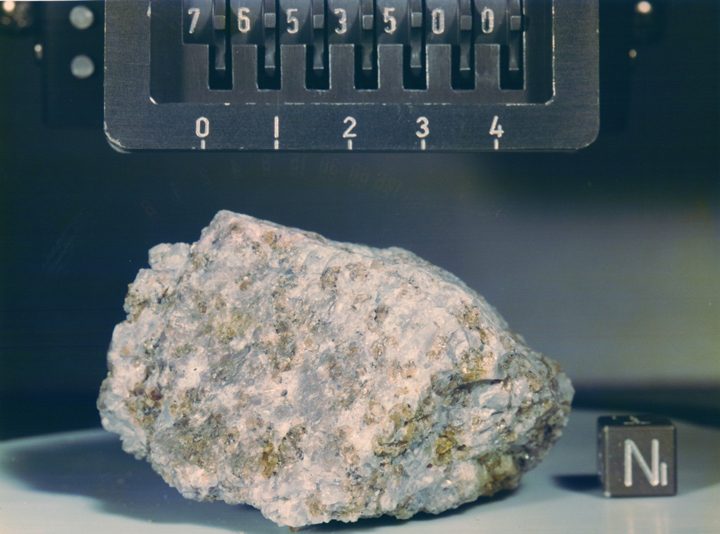On our team’s last day at Kilbourne Hole, we were joined by retired astronaut Harrison “Jack” Schmitt, the lunar module pilot for Apollo 17. He is the only professional geologist to have walked on the Moon and is still an active researcher.
Schmitt joined our 2017 excursion for very much the same reason that Butch Wilmore came: to provide feedback about the instruments and how they could be used during an EVA. He also helped the scientists investigate the local geology of Kilbourne Hole and how this feature developed.
Apollo 17 astronaut Jack Schmitt discusses the value of training astronauts in geology and the appeal of Kilbourne Hole, in particular. NASA/GSFC
Before our trip, Schmitt’s most recent visit to Kilbourne Hole had been about 45 years earlier, when he had gone there for Apollo 17 training. Apollo astronauts underwent field training in geology at various sites representing a range of geological features. Kilbourne Hole was one. Other locations used at various times included, but were not limited to, sites in western Texas, Hawaii, Arizona, California and Canada. Because of Schmitt’s expertise in geology, he helped train other Apollo astronauts in how to identify and collect interesting samples.

Among the training activities listed for Apollo 17 astronauts is a geology field trip for Eugene Cernan and Jack Schmitt to Kilbourne Hole on December 20 and 21, 1971. NASA
At Kilbourne Hole this time, Schmitt recalled how his training there had informed his interpretations of what he was observing on the Moon.
December 2017 marks the 45th anniversary of Apollo 17. Astronaut Jack Schmitt looks back on the mission and what it was like to set foot on the Moon.
The landing site for Apollo 17 was the Taurus-Littrow valley, a geologically intriguing area selected so that astronauts could collect samples of ancient rocks from the lunar highlands and look for evidence of young volcanic activity. There, Schmitt collected the “most interesting sample returned from the Moon.” It’s a rock known as sample #76535, which was collected as part of the rake sample at Station 6, located on the North Massif. Like the xenoliths we searched for at Kilbourne Hole, sample #76535 is olivine-rich. It’s a very old specimen that had not been damaged by shock events, and its origin is still being debated.

The olivine-rich Apollo 17 sample #76535 was measured at up to 5 centimeters across with a mass of 156 grams. NASA
Tags: geology, GIFT 2017, planetary analogs, solar system



